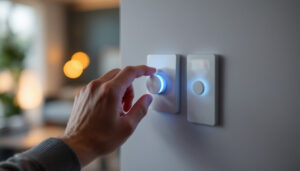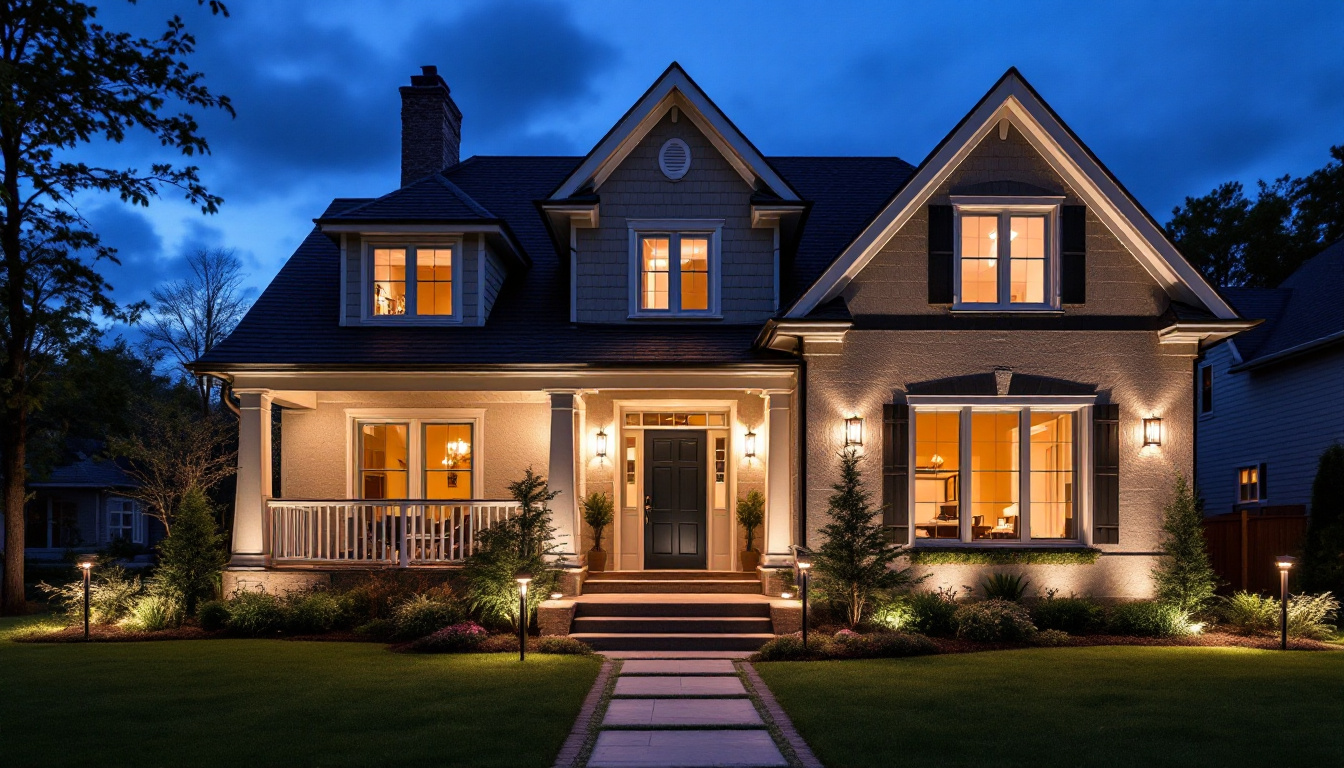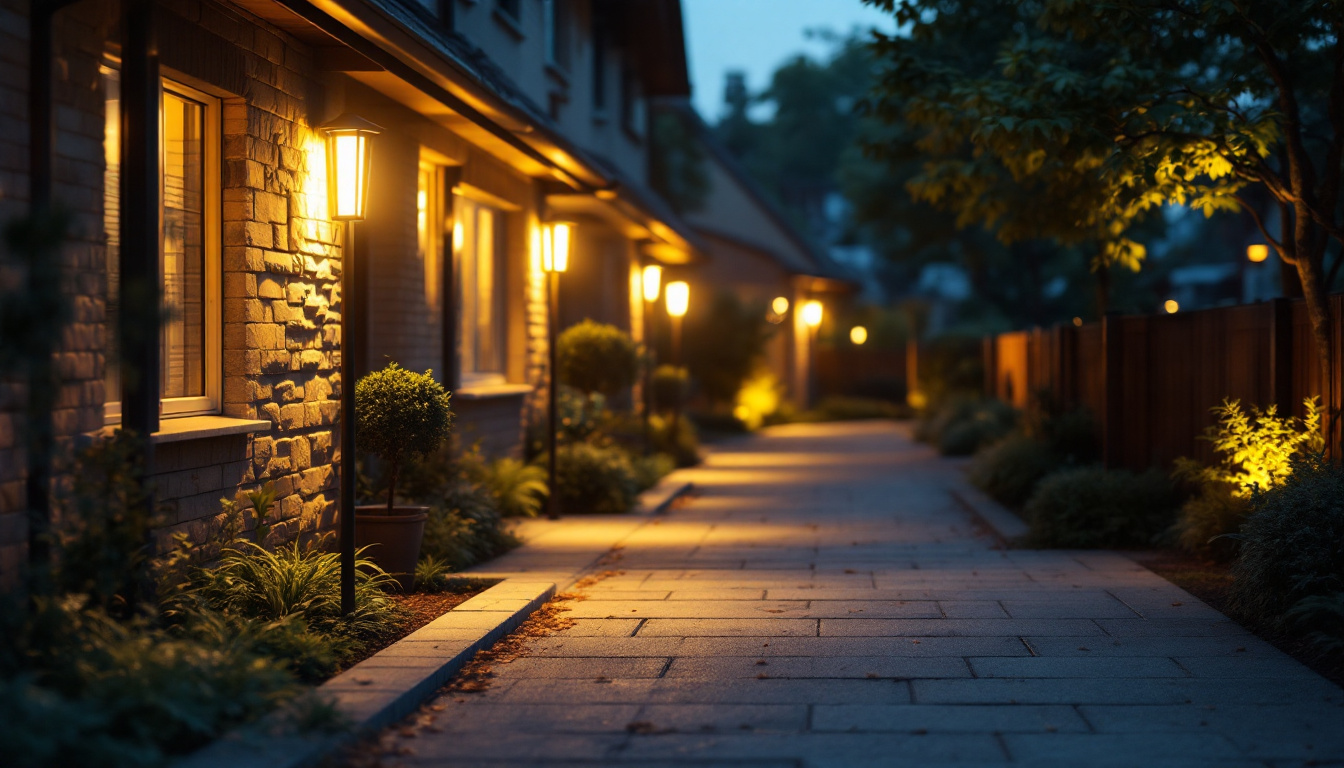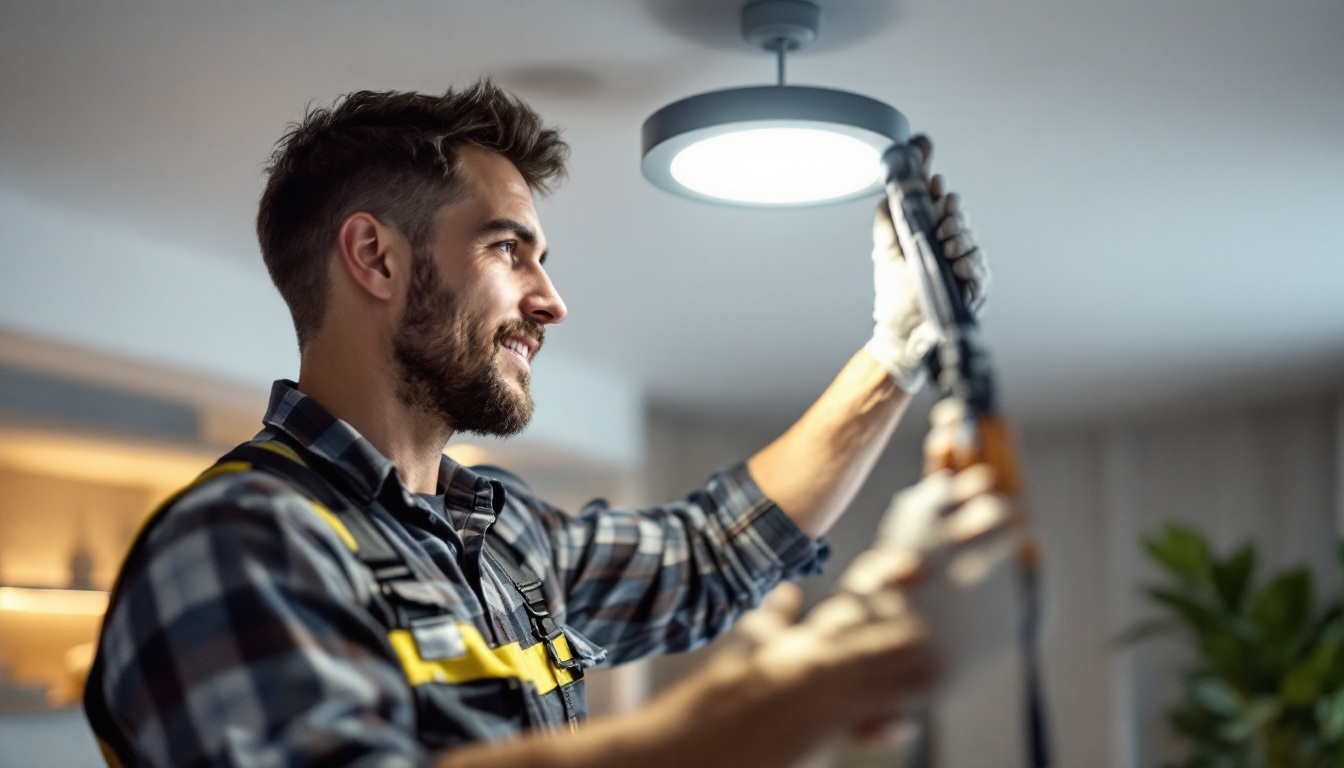

As a lighting contractor, understanding the nuances of outdoor lighting is essential to delivering exceptional service to your clients. Outdoor lighting not only enhances the aesthetic appeal of a home but also provides safety and security. In this article, we will explore various aspects of outdoor lighting, including types of fixtures, installation tips, and design considerations that every lighting contractor should be familiar with.
Outdoor lighting can be categorized into several types, each serving a unique purpose. Familiarity with these types will help you recommend the best solutions for your clients’ needs.
Pathway and walkway lights are crucial for guiding visitors safely to and from a home. These fixtures are typically low to the ground and can be installed along driveways, sidewalks, and garden paths. They come in various styles, including solar-powered options, which are energy-efficient and easy to install.
When selecting pathway lights, consider the brightness and color temperature. Warm white light tends to create a welcoming atmosphere, while cooler tones can enhance modern designs. Additionally, spacing is vital; lights should be placed at regular intervals to ensure consistent illumination. For added functionality, some pathway lights are designed with built-in sensors that adjust brightness based on ambient light levels, ensuring optimal visibility without unnecessary energy consumption.
Security lighting is an essential aspect of outdoor lighting that focuses on deterring intruders and enhancing safety. Motion sensor lights, floodlights, and spotlights are common choices for this purpose. These fixtures should be strategically placed to cover vulnerable areas such as entryways, garages, and backyards.
When recommending security lighting, emphasize the importance of brightness and coverage. Clients may prefer fixtures with adjustable settings that allow them to customize the sensitivity and duration of illumination. Furthermore, integrating smart technology can enhance security by allowing homeowners to control lights remotely. Many modern security lights also feature built-in cameras and alarms, providing an additional layer of protection and peace of mind for homeowners.
Decorative lighting adds character and charm to outdoor spaces. This category includes string lights, lanterns, and wall sconces that can enhance architectural features or highlight landscaping elements. These lights are often used for entertaining areas, patios, and gardens.
As a contractor, you should encourage clients to think creatively about their outdoor spaces. Using a combination of decorative and functional lighting can create a balanced and inviting atmosphere. Additionally, consider the use of dimmers to adjust brightness according to the occasion. For instance, soft, twinkling lights can create a romantic ambiance for evening gatherings, while brighter lights can be used for outdoor games or family activities. Incorporating elements like colored LED bulbs can also add a festive touch for special occasions, allowing homeowners to change the mood of their outdoor areas with ease.
Proper installation is crucial to ensure that outdoor lighting functions effectively and safely. Here are some key tips that every lighting contractor should keep in mind.
Before installation, take the time to plan the layout of outdoor lighting. Walk the property with your client to understand their vision and identify key areas that require illumination. Create a lighting plan that includes the type of fixtures, their placement, and the power source.
Consider factors such as the height of fixtures, the angle of light, and potential obstructions. A well-thought-out layout not only enhances aesthetics but also improves functionality and safety. For example, highlighting pathways with low-level lights can guide guests safely while accentuating the landscape. Additionally, consider seasonal changes in foliage that may affect light distribution, ensuring that the lighting remains effective throughout the year.
Selecting the appropriate fixtures is vital for achieving the desired lighting effect. Consider the style of the home, the purpose of the lighting, and the environment. For instance, coastal areas may require fixtures that are corrosion-resistant, while rustic homes may benefit from lantern-style lights.
Additionally, pay attention to the wattage and energy efficiency of the fixtures. LED lights are increasingly popular due to their longevity and low energy consumption, making them an excellent choice for outdoor applications. When selecting fixtures, also think about the color temperature of the bulbs; warmer tones can create a cozy atmosphere, while cooler tones may be more suitable for modern designs. Moreover, integrating smart lighting systems can provide flexibility, allowing homeowners to adjust brightness and schedules from their smartphones, enhancing both convenience and energy savings.
Safety should always be a top priority during installation. Ensure that all wiring is rated for outdoor use and is buried at the appropriate depth to prevent damage. Use weatherproof connectors and junction boxes to protect electrical connections from moisture.
It’s also essential to follow local electrical codes and regulations. If you’re unsure about any aspect of the installation, consult with a licensed electrician to ensure compliance and safety. Furthermore, consider incorporating ground fault circuit interrupters (GFCIs) to protect against electrical shock in wet conditions. Regular maintenance checks after installation can also help identify any wear or potential hazards, ensuring that the lighting remains both functional and safe for years to come.
Design plays a significant role in the effectiveness of outdoor lighting. Here are some considerations to keep in mind when working with clients.
While functionality is crucial, aesthetics should not be overlooked. Strive to create a harmonious blend of both elements. For example, use pathway lights that not only illuminate the path but also complement the landscaping and architectural style of the home.
Encourage clients to think about the overall ambiance they wish to create. Soft, warm lighting can create a cozy atmosphere, while bright, white lights can offer a more modern and energetic feel. Additionally, consider the color temperature of the lights; warmer tones can enhance the natural beauty of plants and flowers, while cooler tones can provide a sleek, contemporary look that highlights hardscapes.
Layering different types of lighting can enhance the overall effect and functionality of outdoor spaces. Combine ambient, task, and accent lighting to create depth and interest. For instance, use ambient lighting for general illumination, task lighting for specific areas like cooking stations, and accent lighting to highlight features like trees or sculptures.
By layering light, you can create a dynamic outdoor environment that adapts to various activities and moods. This approach also allows for flexibility in design, enabling clients to easily change the atmosphere by adjusting the lighting. Moreover, incorporating smart lighting systems can empower homeowners to control their outdoor lighting remotely, allowing them to set the perfect scene for gatherings or quiet evenings at home.
Outdoor lighting should be versatile enough to accommodate seasonal changes. For instance, in winter, homeowners may want to highlight holiday decorations, while in summer, they may focus on creating a relaxing outdoor retreat.
Encourage clients to think about how their outdoor lighting can evolve throughout the year. Installing fixtures that can be easily adjusted or repositioned will allow them to maximize their use and enjoyment of outdoor spaces regardless of the season. Additionally, consider the impact of local wildlife; using motion-sensor lights can provide security while minimizing disruption to nocturnal animals. This thoughtful approach not only enhances the beauty of the outdoor space but also respects the natural ecosystem surrounding it.
Once outdoor lighting systems are installed, maintenance is essential to ensure longevity and performance. Here are some maintenance tips that contractors can share with clients.
Outdoor fixtures are exposed to the elements and can accumulate dirt, dust, and debris over time. Regular cleaning is necessary to maintain brightness and efficiency. Advise clients to periodically wipe down fixtures and check for any obstructions that may block light output.
For solar-powered lights, ensure that the solar panels are clean and free from debris to maximize energy absorption. A simple cleaning routine can significantly extend the life of outdoor lighting systems.
Regularly inspect outdoor lighting for signs of damage, such as cracked fixtures, frayed wires, or rust. Promptly addressing any issues can prevent further damage and ensure safety. Encourage clients to conduct seasonal checks, especially after severe weather events.
If any fixtures are found to be damaged, recommend replacing them with durable, weather-resistant options to enhance longevity. This proactive approach can save clients from costly repairs in the future.
Outdoor lighting technology is continually evolving. Encourage clients to consider upgrading their systems to incorporate smart technology, such as app-controlled lights or energy-efficient LEDs. These updates can enhance convenience and reduce energy costs.
Staying informed about the latest trends and technologies in outdoor lighting will not only benefit your clients but also position you as a knowledgeable contractor in the industry.
As a lighting contractor, understanding the various aspects of outdoor lighting is crucial for providing excellent service to your clients. By familiarizing yourself with different types of fixtures, installation techniques, design considerations, and maintenance practices, you can create beautiful and functional outdoor spaces that enhance the safety and aesthetic appeal of homes.
Investing time in learning about outdoor lighting will not only benefit your clients but will also set you apart in a competitive market. Embrace the opportunity to educate your clients and help them transform their outdoor areas into inviting and safe spaces.
Ready to elevate your outdoor lighting game? Look no further than LumenWholesale for all your lighting needs. Our extensive selection of top-quality, spec-grade lighting products is available at unbeatable wholesale prices, ensuring you get the best value for every project. Say goodbye to local distributor markups and hello to superior lighting solutions that meet the highest industry standards. With free shipping on bulk orders, LumenWholesale is your go-to source for reliable, high-performance lighting that won’t break the bank. Discover wholesale lighting at the best value and make your next outdoor lighting project shine with LumenWholesale.

Discover essential insights for lighting contractors on security and motion sensor lights.

Discover the essential insights lighting contractors need when considering recessed lighting LED retrofit kits.

Discover the essential insights and expert tips every lighting contractor needs to master recessed lighting installations.

Discover the essential insights every lighting contractor needs to know about fluorescent lights.
Get notified when NEW deals are released.
Optimize your budget with wholesale discounts.
Only top-quality, specification-grade lighting products.
No additional costs at checkout - what you see is what you pay.
We understand the unique needs of contractors.